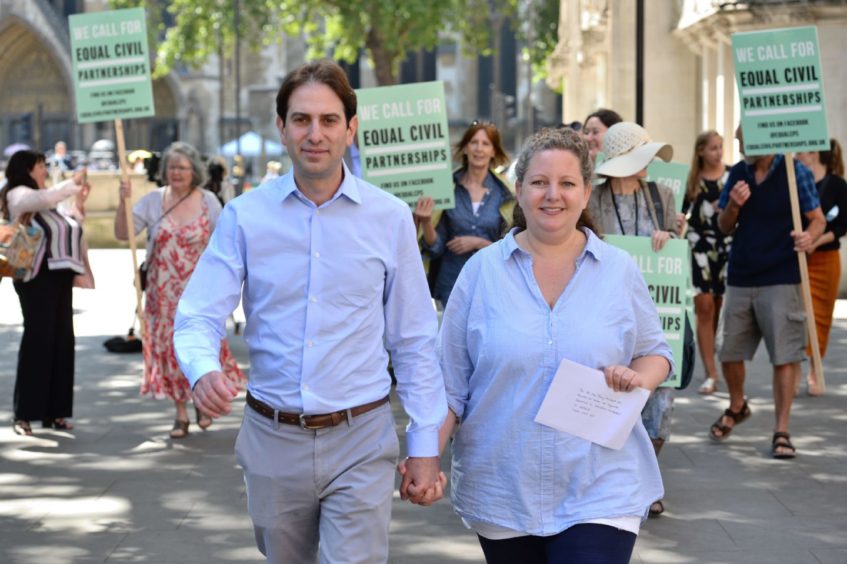From today, men and women in Scotland will have the right to enter a civil partnership after a change in the law granted them the same rights as same-sex couples.
Here Amanda Wilson, a family law specialist in Dundee, explains what the changes might mean.
Are you in a relationship and looking to formalise it? Going back 20 years, you would have had one option – marriage – and then only if you were in a mixed-sex relationship.
At that time, same-sex couples had no way of legalising their relationship.
That changed in 2004 with the legalisation of civil partnerships for same-sex relationships, followed by the chance to convert civil partnership into marriage from 2014.
But what about everyone else? Ironically, the introduction of same-sex marriage created an inequality: same-sex couples had the choice to marry or enter a civil partnership, whereas mixed-sex couples did not. But, as from this month, that’s changing.
The background
The situation was reviewed following the case of English couple Rebecca Steinfeld and Charles Keidan.
They rejected the notion of traditional marriage but wanted the security and legal recognition of something stronger than cohabiting.
Back in 2014, they tried to form a civil partnership at their local registry office, only to be told they couldn’t because they were not of the same sex.
Speaking of marriage at the time, the couple said, “There is nothing wrong with it, but it just isn’t right for us, and isn’t for lots of other people.
We see each other as partners – not as husband and wife – and we didn’t want all the social pressures and expectations that surround marriage, like the bride wearing white virginal dresses and being given away by her father.”
Unable to have a civil partnership, they took their case to the UK Supreme Court in 2018 and won.
Five years later, in the presence of friends and family including their two young daughters, the couple achieved their goal.
They said their wish to form a civil partnership had been “rooted in our desire to formalise our relationship in a more modern way, focused on equality and mutual respect.”
Now, following the introduction of the Civil Partnership (Scotland) Act 2020, couples can submit a notice of intention to enter a mix-sex partnership from Tuesday June 1 2021 and the first ceremony, albeit more modest due to Covid-19 restrictions, could take place from Wednesday June 30 2021.
The Registrar General has the discretion to waive that 28-day notice period where one of the intended parties is terminally ill or is due to be posted overseas in the armed forces.
This means that, if you’re in a mixed-sex relationship but don’t fancy the idea of marriage, you now have another option. Rather than co-habiting and having no automatic rights on separation or death, you can enter a civil partnership instead.
What’s the difference between this and a marriage?
Surprisingly, there is no difference. Civil partners have the same rights as married couples. They have the same financial entitlement on divorce.
In the event of death, they are also treated in the same way as spouses. However, there are some particular differences in terms of how pensions are dealt with in the event of death.
As the second-largest family type in the UK, cohabiting will still be the choice of many. However, if you want to safeguard your future in the event of separation or death, it’s wise to have a cohabitation agreement prepared.
These are particularly advisable if you are buying a property together or for couples who have children either together or from a previous relationship.
Happily ever after?
So what now? Can we expect to see a flood of civil partnership ceremonies from couples wishing to take advantage of a right originally legislated for same-sex couples?
That remains to be seen but, with gender equality underpinning everything we say and do, the law must reflect family life in Britain.
For one reason or another, marriage is not for everyone but, through this change, there is now another way for people to express their love and commitment while safeguarding their financial future in the process.
Whatever your views, we all deserve a way to celebrate our union in a way that works for us.
Amanda Wilson is a family lawyer based in Dundee and accredited as a specialist in family law by the Law Society of Scotland.


